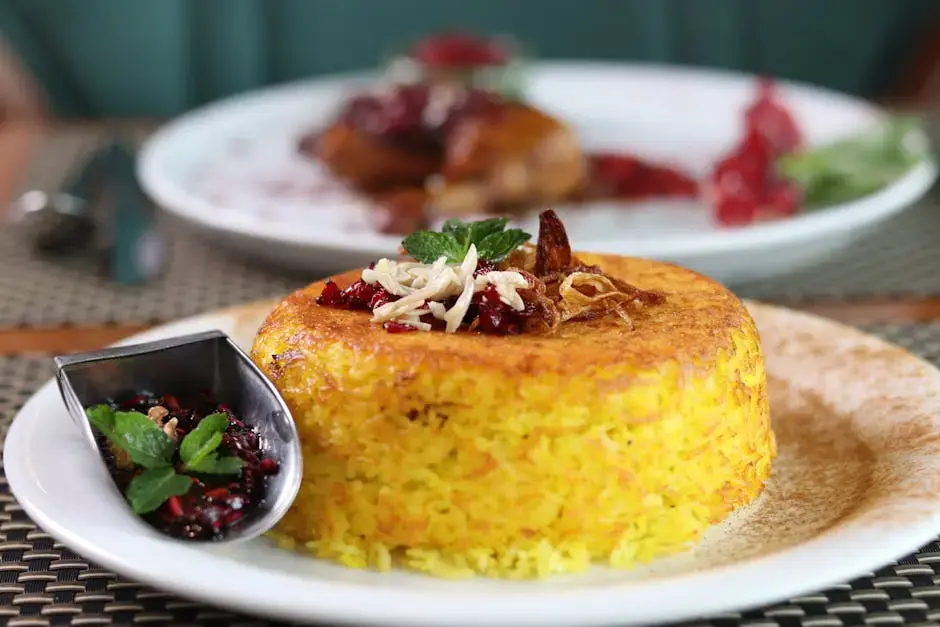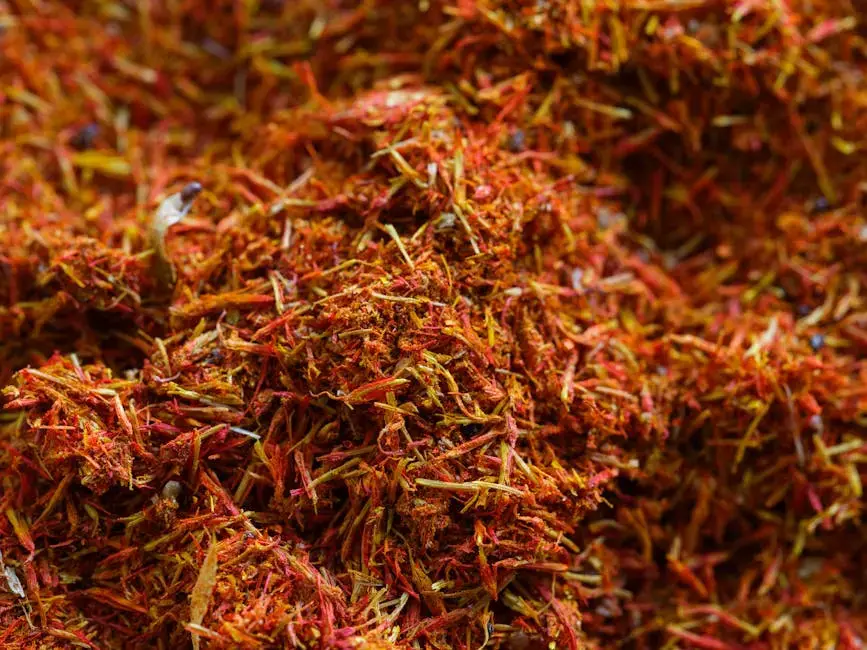10 Must-Try Mediterranean Dishes You Didn't Know About
- Chelo
- Feb 14
- 5 min read
Exploring the Mediterranean cuisine is like embarking on a culinary adventure that promises mouthwatering flavors and unique dishes. While many are familiar with the classics like hummus or baklava, there's a treasure trove of lesser-known delights waiting to be discovered. Let's dive into these hidden gems of Mediterranean cuisine that you absolutely must try.

1. Savor the Richness of Saganaki
Originating from Greece, Saganaki is a dish named after the pan in which it is cooked. This delightful appetizer consists of cheese that is seared until golden and crispy on the outside while remaining soft and gooey inside. Typically, the cheese used is Kefalotyri or Graviera, both of which impart a tangy, creamy goodness that's hard to resist. It's often served with a squeeze of lemon to enhance its flavors, giving it a fresh and slightly acidic touch that balances the richness perfectly. While saganaki is traditionally made with cheese, variations include using other ingredients like shrimp, which equally soak up the tangy, buttery sauce during cooking.
For an exquisite pairing, consider serving Saganaki alongside a chilled glass of Retsina, a unique Greek wine with resinous notes, which accentuates the savory profile of the dish. This combination makes for a perfect appetizer to start any Mediterranean-themed feast, setting the stage for a meal filled with vibrant and robust flavors. Saganaki showcases how simple ingredients can create a memorable culinary experience, making it a must-try for those looking to expand their Mediterranean palate.
2. Indulge in Revani
Revani is a sweet semolina cake, soaked in syrup, that epitomizes the fusion of simplicity and sophistication in Mediterranean desserts. Often enjoyed in Greece and Turkey, each bite of Revani is a journey through a landscape of tender, crumbly texture bursting with the floral notes of orange blossom or lemon zest. The syrup not only adds moisture but also infuses the cake with a lingering sweetness that is delightful without being overpowering. Traditionally garnished with a sprinkle of almonds or pistachios, Revani offers a crunchy contrast to the moist cake, delivering a harmonious blend of flavors and textures.
3. Discover the Delights of Fatteh
A Levantine masterpiece, Fatteh offers a canvas of ingredients layered to perfection. It begins with a base of crispy, oven-toasted flatbread pieces that serve as the foundation for this comforting dish. The bread is often doused in a mixture of flavorful chickpeas and creamy, tangy yogurt, providing a luscious and nourishing texture. Each layer brings something distinctive: the savory wholesomeness of chickpeas, the creamy tang of yogurt, and a hint of garlic to elevate the dish. Topped with golden pine nuts and fresh herbs like parsley or mint, Fatteh captures the essence of Middle Eastern cooking, creating a tapestry of flavors.
4. Taste the Authenticity of Shakshuka
Shakshuka, a vibrant concoction of poached eggs nestled in a spiced tomato-and-pepper sauce, is a staple that originated in North Africa but has become a beloved dish throughout the Mediterranean. Packed with aromatic spices like cumin and paprika, it exudes warmth and comfort, making it not just a dish but an experience. Shakshuka is often enjoyed as a breakfast or brunch dish, served with fluffy pita or crusty bread to scoop up the rich sauce. The charm of Shakshuka lies in its versatility; it readily accepts additional ingredients like chorizo or feta, adapting to taste preferences while maintaining its traditional roots.
5. Experience the Flavor of Kibbeh Nayyeh
Kibbeh Nayyeh, a traditional Lebanese delicacy, mirrors the sophisticated simplicity and bold flavors of the Mediterranean kitchen. Similar to a tartare, it comprises raw minced lamb or beef blended meticulously with bulgur wheat and seasoned with potent spices like cinnamon and allspice. The preparation calls for precision to ensure the meat achieves the right texture, serving as both a culinary skill and an expression of cultural pride. Typically garnished with fresh mint leaves and onions and drizzled with extra virgin olive oil, Kibbeh Nayyeh celebrates the natural flavors of its ingredients. While it might be an acquired taste, for many, it's a testament to the depth of Middle Eastern gastronomy, offering a bold culinary adventure for those willing to explore its rich tapestry.
6. Relish the Simplicity of Caponata
Caponata, a traditional Sicilian eggplant dish, stands as a testament to the vibrant and flavorful reputation of Mediterranean vegetable dishes. Known for its sweet and sour profile, caponata combines silky eggplant with tomatoes, olives, onions, and capers, simmered down to a rich, flavorful medley. The dish is often accented with red wine vinegar and sugar, which balance the natural sweetness of the onions and eggplants with a subtly sharp tang. Originating from Sicily, each bite of Caponata tells a story of the island's fertile lands and sun-drenched summers, showcasing a harmonious blend of local produce. Whether served as a side dish or a topping on crusty bread, Caponata shines in its ability to bring together the freshest Mediterranean ingredients into a cohesive and delectable whole.
7. Enjoy the Earthiness of Dolma
Dolma is a culinary tradition that extends across the Mediterranean and beyond, uniting various cultures around the concept of stuffed vegetables. The most iconic of these are vine leaves, meticulously rolled around a filling of rice, herbs, and sometimes minced meat. The creation of Dolma is both an art and expression, with each cook bringing their unique touch to the seasoning and filling. Traditional versions highlight the earthiness of the vine leaves balanced by notes of dill, lemon, and olive oil, resulting in a savory dish with a gentle, tangy zing. For a true Mediterranean experience, serve these savory parcels chilled or at room temperature, accompanied by a side of creamy yogurt, which enhances the intricate flavors.
8. Sample the Spices of Harira
Harira is not just a soup; it is a cherished culinary tradition in Morocco, integral to the sacred month of Ramadan. This aromatic soup combines a rich tomato base with lentils, chickpeas, and a vibrant palette of spices, including ginger, cinnamon, and coriander. Harira is symbolic, providing nourishment and comfort, breaking the daily fast with its comforting warmth and depth of flavor. Served with lemon wedges and dates, Harira creates a beautiful balance of citrus and sweetness. Deeply aromatic, it embodies the essence of Moroccan cooking, where spices turn simple ingredients into heartwarming meals. Savoring Harira is akin to experiencing a tapestry of Moroccan flavors, each spoonful offering a delightful blend of textures and tastes.
9. Appreciate the Aroma of Sfogliatelle
Sfogliatelle, hailing from Italy, is a testament to the art of pastry making within Mediterranean cuisine. This shell-shaped pastry, also known as 'lobster tail', boasts a flaky and crisp exterior that contrasts beautifully with its creamy ricotta filling. The addition of citrus peel imparts a delicate aroma that wafts through the air as soon as you take a bite. Sfogliatelle is celebrated for its unique preparation; the dough is meticulously layered to create myriad delicate folds, achieving a texture that's both light and indulgent. Paired with espresso, this dessert transforms a simple coffee break into an indulgent experience, resonating with Italian culture's emphasis on quality and enjoyment.
10. Embrace the Tradition of Bisteeya
Bisteeya, or Pastilla, is a show-stopping Moroccan pie that captivates with its juxtaposition of sweet and savory flavors. Traditionally prepared for celebrations, Bisteeya combines succulent spiced chicken, almonds, and eggs intricately layered within a delicate, buttery filo pastry. The topping of powdered sugar and cinnamon might surprise those unfamiliar, yet this addition enhances the exotic essence of Moroccan cuisine. This dish showcases the grandeur of Moroccan culinary tradition, where each layer contributes to the opulent composition, offering a taste that's both familiar and exciting. Serving Bisteeya is more than presenting a dish; it's an invitation to explore the intricate relationship between flavors and culture, encapsulating the philosophy of bringing people together through food.




Comments